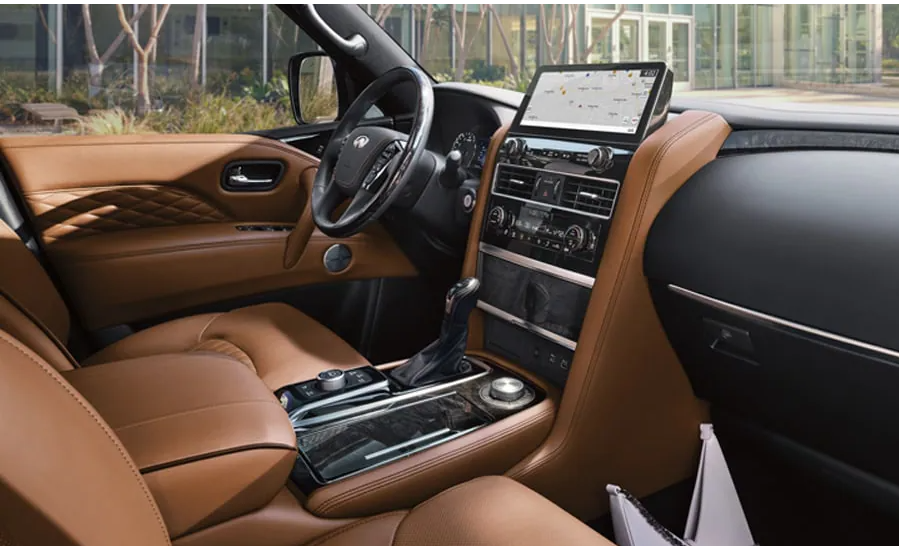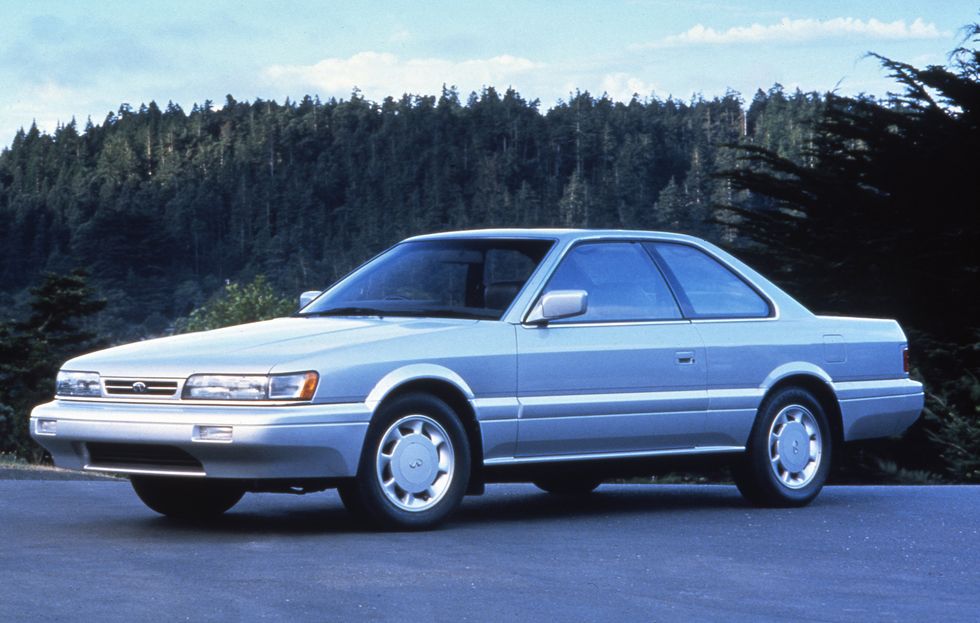Automotive tongue-waggers, including the folks at Motor Biscuit, are speculating that Nissan’s luxury brand, Infiniti, will be dead by 2030 as sales continue to plummet, and it appears that Nissan is continuing to defund the brand.
The fact is that Infiniti has been on life support for years, and it is actually surprising that Nissan hasn’t already pulled the plug.
Pretty much everyone agrees that Infiniti has always struggled with an identity problem.
In the years prior to Infiniti’s launch in 1989, Japanese cars were seen as basic transportation by Americans and Europeans alike and not luxury vehicles by any stretch; however, by the mid- to late-1980s Nissan had proved with its Maxima marque the Japanese could deliver a solid luxury vehicle.
Ironically, it was Nissan that failed to deliver a luxury brand while its homegrown competition did.
All three of the Japanese big automakers, Honda, Toyota and Nissan, saw an opportunity as American luxury car buyers began to turn to German luxury cars which were smaller and more powerful than the land yachts that Cadillac and Lincoln were producing.
Toyota and Honda spent years developing the Lexus and Acura underpinnings and styling and both were successful coming straight out of the gate. However, with Infiniti, Nissan skipped most of the development process and rushed the vehicles to market.
It seemed evident that Nissan, an industry leader at the time, was just following the pack.
While Acura and Lexus were able to set themselves apart from their parent companies, Infiniti was never able to climb that hill.
For starters, Nissan only placed its Infiniti dealerships in select high-income markets, and that was a mistake. Had Nissan looked to history, its leaders would have noticed that Ford did a similar thing when it made the Continental marque its own division; by trying to make the brand seem exclusive, Ford lost money on every car it sold.
According to Car and Driver, Nissan could have looked at another Ford disaster to know what not to do. In the lead up to the launch of the Edsel brand in 1958, Ford kept the new car under a tarp to try and create hype.
The first ads for the Infiniti never actually showed the car; instead, the ads showed nature scenes along with the car’s logo, and this confused potential customers.
However, despite the hype, when the vehicles landed in showrooms, the public was largely unimpressed.

Unlike Acura and Lexus, which had their own platforms developed and were different in almost every way from their sister brands, Infiniti models were little more than rebadged Nissans.
Both the first generation M30s and Q45s were built on the Nissan Leopard platform and only differed cosmetically with their Nissan counterparts.
While Infinities were solidly engineered and built, at 160 horsepower, they were not the performance vehicles offered by BMW and Audi; nor were they distinct luxury vehicles either, as leather seats and other standard luxury options were not standard in the Infiniti.
Cheap plastic sans any wood grain or other luxury ornamentations covered the interior.
Infiniti also did not offer a wide variety of colors, with most of the vehicles rolling off the assembly line painted a pearl white hue.
Hardly anyone wanted to pay $10,000 more for a rebadged Nissan when they could just buy a Nissan.
In 1993, Infiniti regrouped and replaced the M30 with the J30, which was its own car in terms of styling. Instead of a rebadged vehicle, the J30 took styling cues from Jaguar, cutting out the sharp corners and having a dramatic rear deck slope accented with a spoiler.
However, the new generation vehicle had its problems as the sloping rear quarter also cut out a lot of headroom, making backseat passengers uncomfortable.
By 1999, Nissan found itself in financial trouble and brought in Carlos Ghosn as chairman, who was tasked with turning the struggling company around. Having limited resources, Ghosn focused less on Infiniti development; however, he was known for putting extreme pressure on dealers to move Infiniti units, no matter what it took.
By 2005, Infiniti was selling a respectable 138,000 units a year, according to Top Speed, but sales plummeted when the Great Recession hit in 2008. That was when it became clear that the sales numbers were highly misleading.

Ghosn had pressured dealers to the degree that they resorted to almost giving away the cars; sure, they met the sales quotas, but Nissan was actually losing money on the cars they sold.
After almost 20 years in operation, it seemed that Infiniti was finally getting it right. The company was producing good quality, powerful luxury cars and sales peaked in 2017 at 153,000.
However, Nissan was rocked in 2018, when Ghosn was arrested and charged with financial crimes related to his tenure at Nissan. Before Ghosn could be tried, he escaped house arrest and fled to Lebanon, where he remains to this day.
In 2023, Infiniti sold a pathetic 46,000 units, according to Top Speed.
Much of what Infiniti is selling nowadays are cars built on outdated platforms. Motor Biscuit notes that Infiniti’s top-of-the-line SUV, the QX80, is now a 10-year-old design with only minor modifications made over the years. Meanwhile, the QX50 is riding along on a platform that is nearly 20 years old.
According to Automotive News, in 2020, Infiniti tried a new approach with a plan called “Nissan Plus,” but all that was was the company finally admitting what the public has known for years: Infinities are just gussied-up Nissans.
Hyundai, a Korean company, has now stepped into the luxury field with its Genesis brand, and that has knocked Infiniti down yet another notch in the market.
At this point, Infiniti has no “halo” car, no new designs and no plans to offer an EV, so Motor Biscuit is likely correct in stating that the brand is now in hospice care and will likely expire soon.
See you on the road!
Scott Hudson is the Senior Investigative Reporter and Editorial Page Editor for The Augusta Press. Reach him at scott@theaugustapress.com













